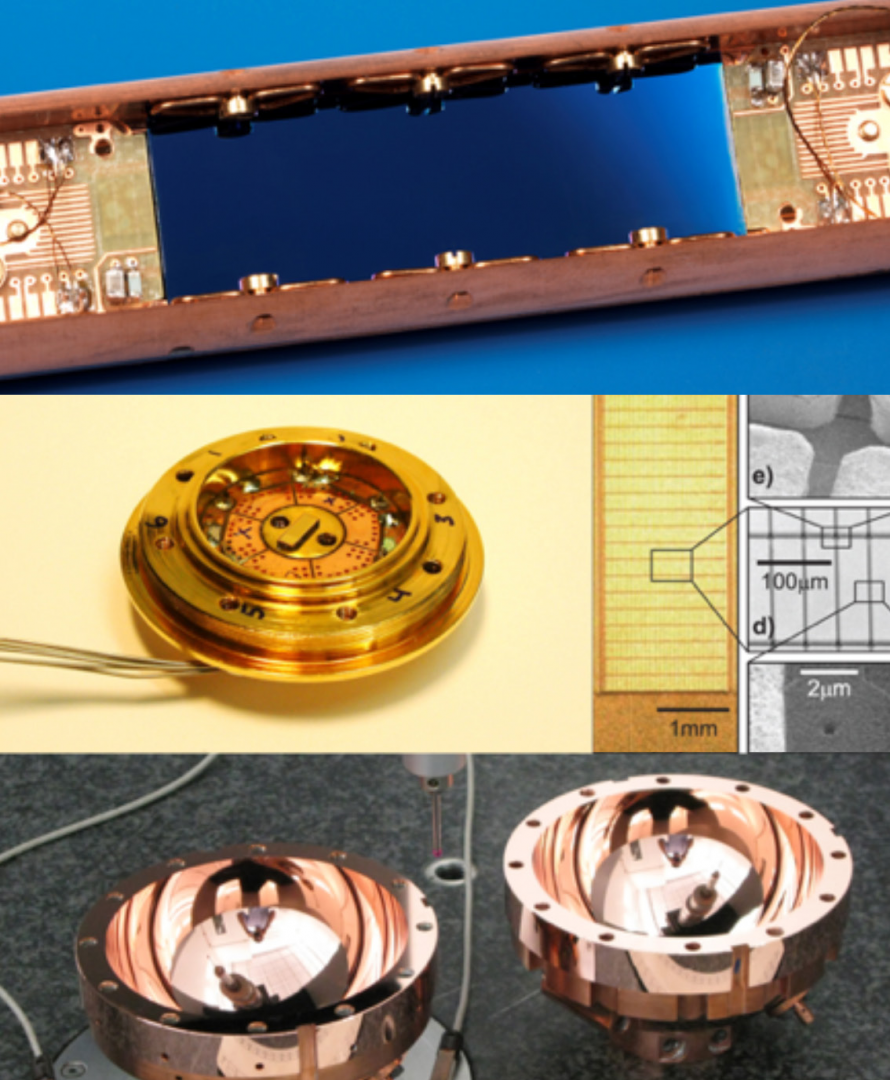WP2: Realisation and dissemination of the redefined kelvin below 25 K
The aim of this work package is to perform research to extend the working range of primary thermometry developed in the preceding InK projects to the temperature range from 1 K to 25 K for direct realisation and dissemination of thermodynamic temperatures. This will enable measurements of thermodynamic temperature using only a single device over most of the temperature range currently used for low-temperature applications avoiding the reference to the elaborate realisation of the international temperature scales ITS-90 and PLTS-2000. We will demonstrate consistency of the developed primary methods and demonstrate smooth overlap with the primary methods developed for the PLTS-2000 <1 K. Finally, we aim to support the realisation and dissemination of the kelvin by practical primary thermometry in the temperature range from 1 K to 25 K.

Primary thermometers for the temperature range from 1 K to 25 K
The aim is to extend the working range of Johnson noise thermometry (JNT) and Coulomb blockade thermometry (CBT) to temperatures from 1 K to 25 K. The target uncertainty is 1 % and less for the measurement of thermodynamic temperatures. Also, a fast, acoustic gas thermometer (“fast-AGT”) will be developed for the range from 4 K to 25 K making feasible the application of AGT in practical primary thermometry.
Fixed and reference points for thermometer checks and characterisation
The aim is to use the superfluid Lambda transition (λ-point) in 4He at 2.1768 K and the Ne triple point (TP) at 24.5561 K as highly stable and well characterised reference points for characterisation and checks of the operation of the developed primary thermometers. This will also allow to test the underlying models used for the determination of thermodynamic temperature and provide verified thermodynamic temperatures values for these reference points.
Validation of primary thermometers in the temperature range from 1 K to 25 K
The aim is to carry out comparison measurements of JNT, CBT and “fast-AGT” and primary data based on dielectric constant gas thermometry (DCGT) and high precision acoustic gas thermometry (AGT). The comparison measurements will validate the temperature measurements with the developed primary thermometers and demonstrate the feasibility of replacing the ITS-90 and PLTS-2000 by primary thermometers in the temperature range below 25 K.
Dissemination of thermodynamic temperatures by practical primary thermometry
The aim is to make available to stakeholders the developed primary thermometric methods. Preferably, joint demonstrations of the realisation of thermodynamic temperature measurements will be carried out with stakeholders/partners from the science and industry to demonstrate the application of primary methods in practical thermometry.